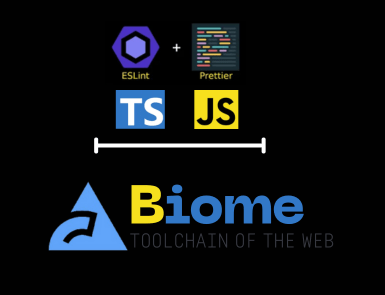
Web developers that work with JavaScript rely on different tools to optimize code quality and ensure a smooth workflow. Although tools like ESLint and Prettier help with tasks like linting and formatting, using them together can create overlap and add complexity.
This is where Biome.js steps in. It is a modern toolchain for JavaScript and TypeScript that combines multiple functions into a single package. Let’s get to know more about Biome, its features, and applications.
Overview of Biome
Biome was officially announced on August 29, 2023. It combines the functions of tools like ESLint, Prettier, Terser, and Babel, making it easier for developers to manage code.
Biome supports a unified configuration for linting and formatting. By simplifying setup, it enhances developers’ productivity. The toolchain also delivers high-speed performance thanks to its Rust-based engine.
Components of Biome.js
Biome’s architecture differs from that of conventional JavaScript tools. It consists of several components that work together to deliver a unified development experience.
- Formatter: Automatically enforces a consistent code style by adjusting indentation, spacing, and syntax throughout your project.
- Linter: Provides accurate diagnostics without requiring any external plugins.
- Parser: Efficiently handles modern JavaScript and TypeScript syntax.
- Error Reporting: Offers standardized, easy-to-understand diagnostics, helping developers quickly identify and fix issues during debugging.
Key Features of Biome.js
- High Performance: Biome.js is written in Rust, a programming language known for its speed and efficiency. Compared to popular JavaScript-based tools like ESLint and Prettier, Biome.js is roughly 10 times faster. This makes it ideal for large projects, including enterprise applications, back-end services, and front-end frameworks.
- Zero-Config Setup: Users can start working with Biome immediately, without spending hours tweaking configuration files. It comes with predefined rules and formatting styles that are applied automatically when you run commands like biome format or biome check. No initial setup or configuration files are required.
- Support for TypeScript: Today, most applications rely on TypeScript. Biome offers built-in support for TypeScript linting and formatting. It formats both TypeScript and TSX files seamlessly.
- Cross-Platform Compatibility: Biome.js provides a smooth developer experience across macOS, Windows, and Linux. Its cross-platform compatibility makes it suitable for teams working in different environments. Additionally, Biome’s precompiled binary distribution allows developers to run it without complex setup or dependency issues.
- Integrated Solution: With Biome.js, you do not need to depend on multiple tools for linting, minification, and formatting. It is a unified toolchain that combines all the capabilities.
- Error Reporting: Another impressive feature of Biome.js is unified error reporting. Developers receive clear, standardized diagnostics in a single format, whether the issue is related to linting, formatting, or TypeScript analysis.
- Developer Experience First: Biome.js prioritizes developers’ comfort and efficiency. The minimum configuration, straightforward command line interface, and quick integration with modern editors like VS Code make this toolchain developer-friendly. Biome.js guarantees consistent and reliable behavior whether you’re working on a personal laptop, a cloud-based workstation, or within a containerized environment.
- Community Support: Since Biome.js is an open-source JavaScript toolchain, it benefits from strong community involvement. Developers continue to improve Biome’s integrations, plugins, and editor support. If users have any queries, they can refer to Biome forums, GitHub discussions, or the documentation.
Use Cases of Biome.js
The Biome.js toolchain can be used in a wide range of development scenarios. Some ideal use cases include:
- Startups: Biome.js is an excellent choice for new projects. Its user-friendliness and performance make it easy to adopt. This all-in-one toolchain supports code formatting, linting, and diagnostics.
- Large-Scale Applications: Biome.js is powered by Rust, making it efficient for large projects. Developers can easily manage applications with hundreds of files.
- TypeScript-Heavy Projects: Biome.js offers native support for TypeScript. For projects that rely heavily on TypeScript, it eliminates the hassle of configuring multiple plugins while maintaining high diagnostic accuracy.
Final Thoughts
Biome.js represents a significant step forward in JavaScript tooling and is gradually becoming the default choice for projects in the JavaScript and TypeScript ecosystems. Although still in its early stages, it has the potential to evolve into a full-featured toolchain. If you want to modernize your workflow without relying on multiple complex tools, Biome.js is worth exploring.







